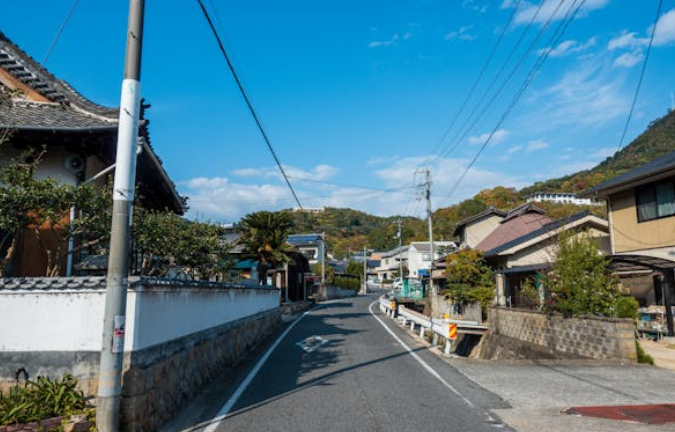
Not long ago, the idea of working from a beach in Bali or a mountain town in Colombia seemed like something reserved for the ultra-rich or ultra-risky. Now, it’s part of a growing movement.
The rise of remote work has changed what a “career” looks like, and with it, the idea of home. Millennials and Gen Z in particular are embracing life on the road, working remotely while living in places that offer more flexibility, adventure, and affordability.
But here’s the truth most Instagram posts won’t tell you: the digital nomad lifestyle isn’t just laptops and lattes. Behind the glossy photos are real costs, major lifestyle adjustments, and plenty of unexpected hurdles.
Let’s look at what it really takes to live as a digital nomad — the good, the bad, and everything in between.
The Benefits: Freedom, Flexibility, and Fresh Perspectives
There’s no denying the appeal. Digital nomad living offers something many people spend years chasing: a sense of freedom.
1. Geographic Flexibility
You’re not tied to one place. You can follow the sun, chase waves, live in cities that inspire you, or settle in places where your money goes further. Want to spend the winter in Thailand and summer in Portugal? Totally doable.
2. Cost Efficiency
Living in lower-cost countries while earning in a stronger currency (like USD or EUR) can stretch your income significantly. Rent in Mexico City might be a third of what you’d pay in New York. A healthy meal in Vietnam? Maybe $2–$4. This financial breathing room can allow you to save more or work fewer hours.
3. Lifestyle Balance
Many digital nomads say they feel more present, more creative, and more in control of their days. Working outside the traditional office structure means you’re often free to shape your work around your life — not the other way around.
4. Global Community
Coworking spaces, nomad meetups, and expat hubs make it easier than ever to meet others living a similar lifestyle. These communities can become fast friends — and often feel more like home than your passport country ever did.

The Hidden Costs: More Than Just Airfare
But for every post showing a laptop open by the pool, there’s a Wi-Fi crash, a missed client call, or an unexpected visa scramble happening behind the scenes.
1. Visa and Legal Gray Zones
Most countries still haven’t caught up with remote work trends. Many digital nomads live and work on tourist visas — technically a legal grey area. Overstaying, working illegally, or misreporting income can lead to fines or bans.
Some countries now offer digital nomad visas (like Portugal, Estonia, or Costa Rica), but navigating the paperwork, taxes, and local laws isn’t always straightforward.
2. Unpredictable Internet
Your whole livelihood depends on a strong internet connection — but good Wi-Fi isn’t guaranteed everywhere. Some cities or islands still struggle with stable speeds or power outages. Without a backup plan (like mobile hotspots or flexible schedules), you’re taking a risk.
3. Insurance and Healthcare
Healthcare systems vary wildly by country. A basic insurance plan might not cover emergency evacuations, mental health, or chronic conditions. And if you’re not a resident anywhere, figuring out how to access care — and who pays — can get complicated.
Comprehensive nomad insurance plans exist, but they aren’t cheap. And unlike your 9–5 job, there’s no HR department helping you figure it out.
4. Tax Confusion
Where do you pay taxes when you live everywhere and nowhere? The answer: it depends — and it can get messy.
Some nomads still pay taxes in their home country. Others register businesses abroad. Some fall into double-taxation traps or miss deadlines entirely. If you’re serious about this lifestyle, you’ll probably need to talk to an accountant who understands international tax law.
What It Really Costs
Digital nomad life can be affordable — but only if you plan smart.
Here’s a rough breakdown of monthly costs (for one person) in popular nomad hubs:
| Location | Rent (1BR Airbnb) | Coworking | Food | Transport | Monthly Total |
|---|---|---|---|---|---|
| Bali, Indonesia | $500–$800 | $100 | $200–$300 | $50–$100 | ~$1,000–$1,300 |
| Medellín, Colombia | $600–$900 | $120 | $250–$400 | $40–$80 | ~$1,100–$1,500 |
| Lisbon, Portugal | $1,000–$1,500 | $150 | $400–$500 | $60–$100 | ~$1,600–$2,100 |
| Chiang Mai, Thailand | $400–$700 | $80 | $200–$300 | $50–$100 | ~$900–$1,200 |
Note: These numbers can vary depending on your lifestyle. You could live frugally on $1,000/month or comfortably on $2,500. The key is understanding the cost of living before you land somewhere.
The Emotional and Mental Toll
Digital nomadism isn’t a permanent vacation. It’s a lifestyle — one that requires adaptability, emotional resilience, and sometimes, solitude.
1. Loneliness Is Real
You might make new friends quickly, but those friendships can be transient. People come and go. Building deep, lasting relationships takes effort — and being away from family can take a toll.
2. Burnout Looks Different
Without a fixed schedule or routine, it’s easy to blur the line between work and life. Some people overwork because there’s no structure. Others drift and lose motivation. Ironically, “freedom” can become a source of stress if you don’t give yourself boundaries.
3. Culture Shock and Language Barriers
Living abroad sounds romantic — until you’re trying to explain your allergy at a local pharmacy, or your Airbnb floods during monsoon season. Cultural differences can be enriching, but also frustrating. Patience helps.
Is This Life for You? A Gut-Check
Before you sell everything and book a one-way ticket, ask yourself:
- Can I work independently without much oversight?
- Am I comfortable being outside my comfort zone?
- Do I have enough savings to handle emergencies?
- Can I deal with slow (or no) internet for a few days?
- Am I okay with frequent goodbyes and a shifting social circle?
There’s no right answer. Some people thrive in the chaos, others find it draining. What matters is being honest with yourself about what you actually want — not what looks good in a hashtag.

Final Thought: Romantic, Yes — But Also Real
Digital nomad living is not a shortcut to happiness or a one-size-fits-all dream. It’s a lifestyle with trade-offs — some exciting, some exhausting.
You might spend one morning working from a seaside café in Split, Croatia — and the next stuck on the phone with immigration services, trying to explain why your visa is expiring tomorrow.
It can be beautiful, frustrating, lonely, liberating, and deeply fulfilling — sometimes all in the same week.
If you go into it with your eyes open, a good Wi-Fi backup, and a decent pair of noise-cancelling headphones, you might just find that the trade-offs are worth it.
Not because it’s perfect — but because it’s yours.



